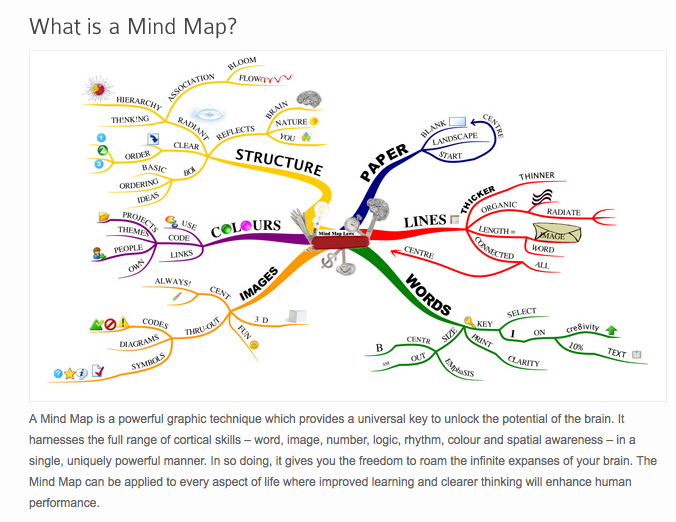Mind Mapping
All Mind Maps have some things in common. They have a natural organizational structure that radiates from the center and use lines, symbols, words, color and images according to simple, brain-friendly concepts. Mind mapping converts a long list of monotonous information into a colorful, memorable and highly organized diagram that works in line with your brain's natural way of doing things.
 One simple way to understand a Mind Map is by comparing it to a map of a city. The city center represents the main idea; the main roads leading from the center represent the key thoughts in your thinking process; the secondary roads or branches represent your secondary thoughts, and so on. Special images or shapes can represent landmarks of interest or particularly relevant ideas.
One simple way to understand a Mind Map is by comparing it to a map of a city. The city center represents the main idea; the main roads leading from the center represent the key thoughts in your thinking process; the secondary roads or branches represent your secondary thoughts, and so on. Special images or shapes can represent landmarks of interest or particularly relevant ideas.The Mind Map is the external mirror of your own radiant or natural thinking facilitated by a powerful graphic process, which provides the universal key to unlock the dynamic potential of the brain.
The five essential characteristics of Mind Mapping:
The main idea, subject or focus is crystallized in a central image.
The main themes radiate from the central image as 'branches'.
The branches comprise a key image or key word drawn or printed on its associated line.
Topics of lesser importance are represented as 'twigs' of the relevant branch.
The branches form a connected nodal structure.
Mind Mapping »
| Suggest a Thinking Tool | Suggest › |
| Edit text for "Mind Mapping" | Edit › |
| Comments on "Mind Mapping": | Comment › |
|
|
|
